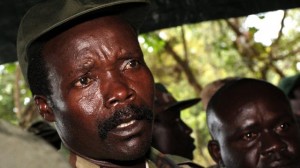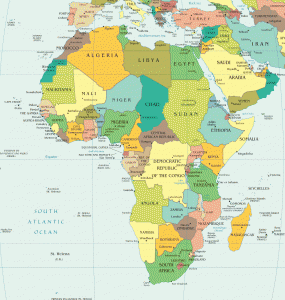Harnessing Kony Buzz to Teach Critical Thinking
Jess Lander is a Teaching Associate at the Edwards Middle School in Charlestown, MA. Follow her regularly updated blog here. “What’s that on your hands?”
My question was directed at one of my students who I noticed had a large inked “K” on the backside of each hand. As a teacher, I’m used to seeing sixth grade skin graffiti – phone numbers, assignment reminders, doodles drawn during class. My question was meant only as a quick check-in before class.
“It stands for ‘Kill Kony,’” she replied.
“Kill who?!”
“Kill Kony. Kony, he is a rapist in Africa who steals children.”
Recently the non-profit Invisible Children released a thirty-minute video indictment of the Ugandan warlord and rebel leader of the Lord’s Resistance Army, Joseph Kony. The filmmakers’ hope is that social media, including Facebook and Twitter, can successfully galvanize the public into demanding and ensuring Kony’s arrest by the end of 2012.
Within one week of its posting on YouTube, the video had gone viral with over 75 million views. Looking across the sea of sixth graders in the cafeteria I realized my students were part of that wave.
As my students explained, a Facebook call to write double Ks had gone out the night before, and by my students’ reckoning, almost three-quarters of the sixth grade now had ballpoint tattoos.
Perhaps the filmmaker was right. Social media had helped spark the anger of eleven and twelve year-olds about a cause halfway around the globe, in a country most of them had never heard of. Yet, as I questioned my students, I grew unsettled. “What country is Kony from?,” I asked. “Africa.”
There is both great power and great danger in social media. I was thrilled that my students had suddenly united around a global cause far removed from their lives in Boston. But I was also disturbed by how their demands for the death penalty were supported by few facts and only one source.
We needed a lesson on critical thinking. The order of mathematical operations could wait a day.
“Write down everything you know about Joseph Kony,” I instructed the class. Creep, weirdo, bad, kidnapper, criminal, evil, kills people, devil, shoots girls, abuses kids, rapist. “Ms. Lander, are we allowed to write the word ‘rapist’?”
I began to probe how much they knew. Only one student knew Kony lead the rebel force, the LRA. Only two students knew that he came from Uganda. Another student believed Kony was hiding out in New Hampshire. It quickly became apparent that the majority of my class had taken all of their information from the single YouTube video put forth by Invisible Children. Some had not even watched that in its entirety.
I decided to see if I could rally their support for another cause.
“Imagine county R,” I encouraged my class. “There is a political party fighting against the elite for the rights of the poor working class. They say that the elite have kept the poor from going to college, from getting high paying jobs, from being respected. They say that the elite have worked with other countries to ensure that they will stay in power. “It’s time to remove the elite from power, raise your hand if you will support this party.” The entire class thrust hands into their air. “Tell me why you are supporting them.” My students responded with passionate defenses for why it was important to support these workers. Finally I cut them off with a question, “do any of you want more facts before you make a decision about supporting this group?” Two tentative hands went into the air.
Only then did I reveal that “Country R” was a real place. That it was a country called Rwanda (I had them locate the country, noting its adjacency to Uganda, on maps I passed out.) “The political party I just described to you,” I went on, “is actually a group called the Hutu Power Party that seventeen years ago convinced about half of the country’s people to rise up and kill the other half of the country’s population with knives.” I went on to describe how the Hutu Power Party helped kill 800,000 people – more than the population of Boston, in just a hundred days.
My students were appalled, and I think, began to see why it was necessary to do their research before supporting a cause. The evidence against Kony is indeed overwhelming, but one video is not enough to condemn anyone.
What stood out most from our discussion though was not my students’ ignorance, but their engagement. Usually by the end of the day, in the minutes before the buses arrive, my students have energy only for games. After eight hours of class, who can blame them? Yet at the end of this Monday, after lessons in math and lessons in main ideas, I was barraged with requests: “Please Ms. Lander, can we keep talking about Kony?”
And so we did. We continued to discuss Joseph Kony, we continued to discuss the Hutu Power party. We broadened our scope and began discussing other world atrocities, other causes my students were passionate about. It was the most engaged I have ever seen my students.
Social media has ensured that my students are inundated by world news, but it has not taught them how to evaluate what they watch, or read, or listen to.
In six years my eleven-and-twelve year olds will be old enough to vote. In the intervening years before 2018, the onus is on us teachers to ensure our students have the tools to be critical thinkers and discerning stewards of the world.
Share - In what ways have you harnessed kids' captivation with trending events on social media to teach a lesson or discuss a concept?

